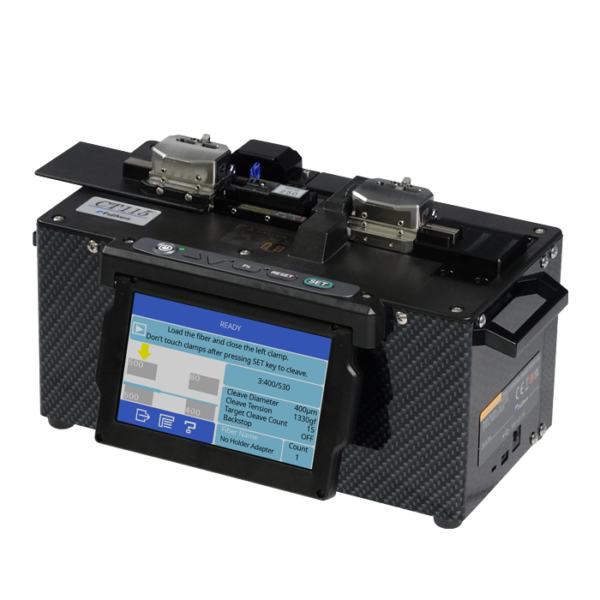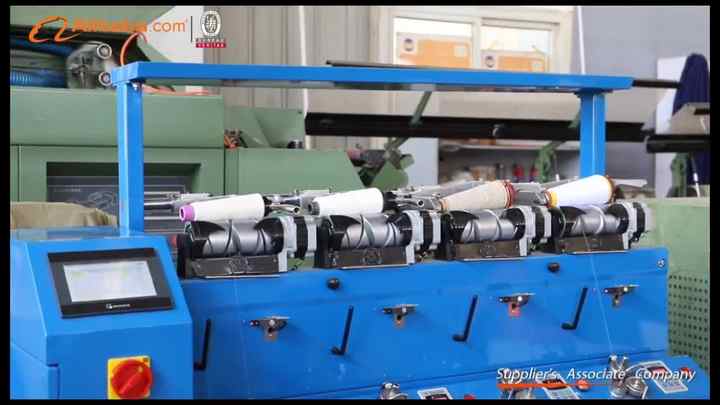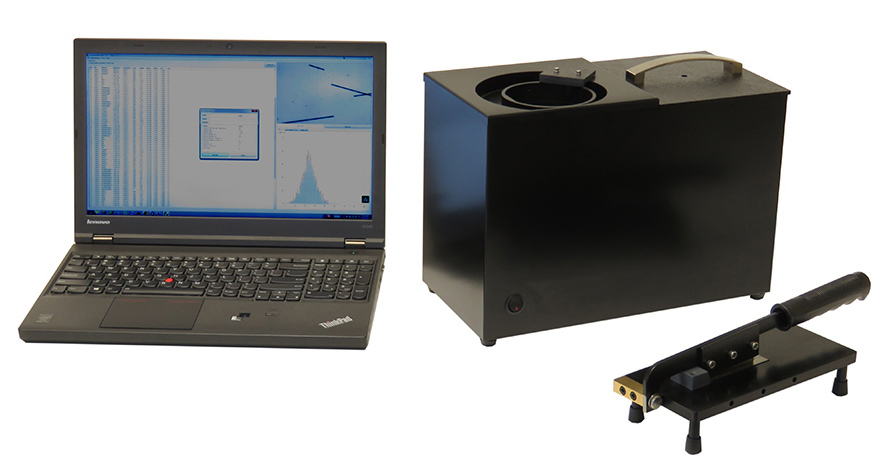Why Optical Fibre Diameter Analyser Systems Are Crucial for Engineers
Why Optical Fibre Diameter Analyser Systems Are Crucial for Engineers
Blog Article
Optimize Your Fibre Optic Performance: Comprehending Optical Fibre Size Analyser Technology
The efficiency of fibre optic systems is critically affected by the accuracy of their size, an aspect commonly overlooked in the search of ideal signal integrity. Recognizing the technology behind optical fiber diameter analysers reveals the detailed balance in between dimension accuracy and production quality.
Relevance of Optical Fiber Size
The size of optical fibre plays an important duty in figuring out the efficiency and efficiency of interaction systems. Alternatively, smaller diameters have a tendency to sustain less settings, which can boost signal clarity and minimize crosstalk.

Additionally, understanding the size's implications can cause cost savings by reducing the requirement for signal amplification and repeaters in considerable networks (optical fibre diameter analyser). To conclude, the importance of optical fiber diameter can not be overstated, as it directly impacts the total effectiveness and integrity of modern interaction systems

Just How Diameter Influences Signal Quality
Signal top quality in optical fibre systems pivots significantly on the size of the fibre. The size affects several vital specifications, consisting of depletion, transmission capacity, and modal dispersion. A smaller size can result in greater attenuation rates, causing signal loss as light journeys with the fiber. This attenuation can jeopardize the honesty of the transmitted data, bring about a decline in signal high quality, particularly over long distances.
Alternatively, larger diameters generally permit enhanced light capture and lowered modal dispersion, enhancing signal clearness. In multimode fibres, a bigger core size can support numerous light settings, however it may likewise present intermodal dispersion, which can deteriorate signal high quality. Choosing the optimum fiber diameter is important for attaining the wanted efficiency in details applications.
Additionally, the communication in between the fiber size and the wavelength of the light utilized plays a crucial duty in figuring out the effective transmission range and overall signal honesty. Because of this, recognizing exactly how fibre diameter affects signal high quality is important for network developers and engineers making every effort to optimize optical fibre systems for trusted, high-speed data transmission.
Overview of Diameter Analyser Technology
In lots of optical fiber production processes, accurate measurement of fibre size is important for making certain consistent performance and quality (optical fibre diameter analyser). Diameter analysers are advanced tools designed to examine the physical dimensions of optical fibres with high accuracy. They use innovative optical and laser modern technologies to gauge the diameter, ovality, and concentricity of the fiber, hence offering important information for top quality control
These analysers can operate in-line throughout the production procedure or as component of off-line screening procedures. In-line systems allow real-time tracking, allowing producers to change specifications right away, thereby maintaining optimum production conditions. Off-line analysers, on the various other hand, provide comprehensive examinations of batches, making certain that any deviations from specified resistances are identified and addressed.
Size analysers significantly add to the decrease of defects in optical fibres, enhancing total product more info here reliability. By continually measuring key criteria, these modern technologies help with compliance with market requirements and specifications. As the need for high-performance optical fibres remains to rise, the duty of diameter analysers comes to be increasingly crucial in accomplishing the preferred quality and performance requirements in fibre optic systems.
Key Attributes of Fiber Diameter Analysers
Although various designs of fiber size analysers exist, they generally share numerous crucial functions that enhance their performance and reliability. One of one of the most significant attributes is high-resolution dimension capacities, which guarantee exact diameter analyses, vital for preserving top quality control in fibre manufacturing. Furthermore, many analysers integrate innovative optical sensors developed to detect minute variations in fiber size, hence giving very useful information for process optimization.
An additional essential attribute is real-time surveillance, allowing drivers to receive instant responses on fibre size throughout the manufacturing process (optical fibre diameter analyser). This capability helps with fast adjustments and minimizes the chance of defects. Lots of analysers likewise come outfitted with user-friendly interfaces, making it possible for drivers to quickly browse click to read more via settings and information outcomes
Additionally, durable information storage and analysis functionalities are important for tracking historic efficiency trends and making sure conformity with sector standards. Some designs also supply connection options for integration into existing production control systems, boosting total operational efficiency. Finally, mobile and compact designs permit adaptable release within manufacturing settings, guaranteeing that high quality assurance processes are seamless and reliable. These functions collectively add to the effectiveness of fibre diameter analysers in enhancing fibre optic performance.
Ideal Practices for Fiber Optimization

First, regular calibration of optical fiber diameter analysers is crucial. This ensures exact measurements and reduces potential disparities that can impact performance. Next, keeping a tidy functioning atmosphere is crucial; dust and contaminants can bring about indicate destruction.
Additionally, it is essential to choose fibers that satisfy details application requirements. This entails evaluating aspects such as depletion, transmission capacity, and ecological problems. Appropriate setup strategies must additionally be followed, including staying clear of sharp bends and too much stress, which can compromise fiber stability.
In addition, employing innovative surveillance systems can promote real-time performance analyses, enabling punctual recognition of issues. Routine testing and maintenance ought to be carried out to ensure that fibers continue to be within optimal functional parameters.
Lastly, training employees on the most up to date fibre optimization technologies and methods will certainly enhance their capability to apply reliable strategies. By following these ideal methods, organizations can web link significantly enhance the performance and lifespan of their optical fiber systems, making sure effective communication and information transfer.
Conclusion
In verdict, the integration of optical fibre diameter analyser modern technology is crucial for optimizing fiber optic efficiency. By ensuring accurate dimensions of fiber measurements, these analysers dramatically enhance signal top quality and decrease losses throughout data transmission. Regular calibration and maintenance of the analysers are essential to promote optimum efficiency and conformity with sector standards. Inevitably, the application of this modern technology facilitates enhanced data transmission rates and reinforces signal stability, contributing to the total performance of fibre optic systems.
Signal top quality in optical fiber systems pivots substantially on the diameter of the fiber.In many optical fibre production procedures, precise measurement of fibre size is essential for guaranteeing constant performance and high quality. As the demand for high-performance optical fibres continues to increase, the duty of size analysers ends up being progressively vital in accomplishing the wanted quality and performance criteria in fiber optic systems.
These features jointly contribute to the efficacy of fibre diameter analysers in maximizing fiber optic performance.
In conclusion, the integration of optical fiber size analyser modern technology is crucial for taking full advantage of fiber optic efficiency.
Report this page